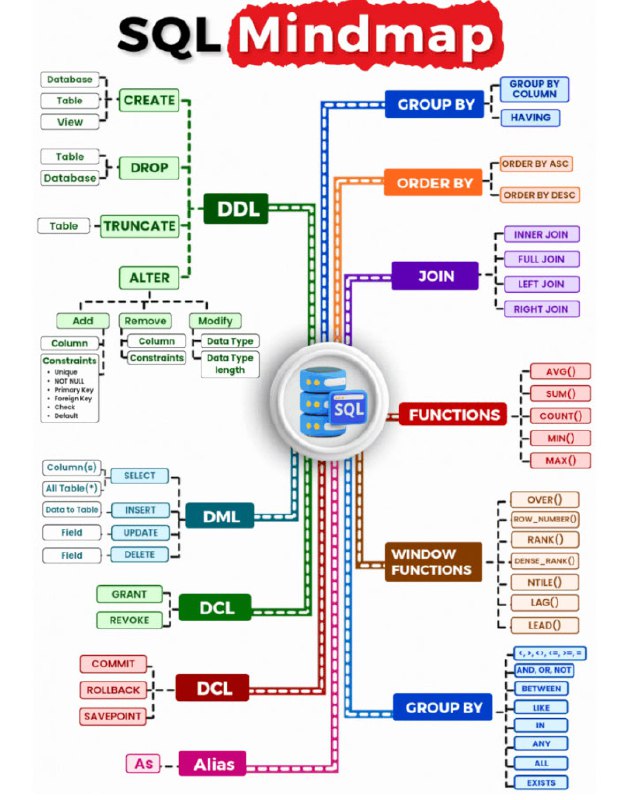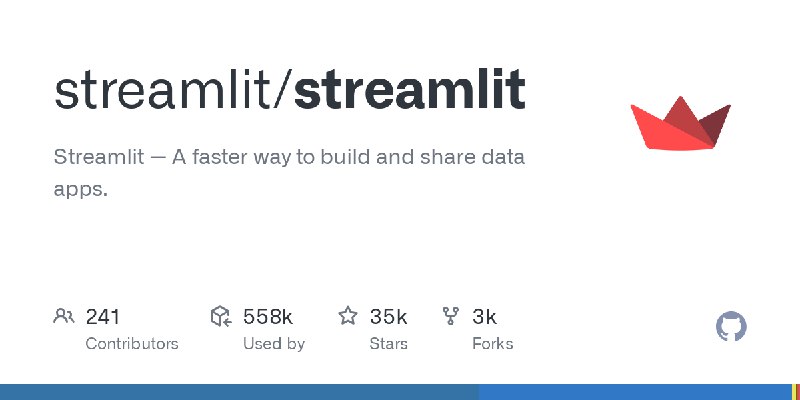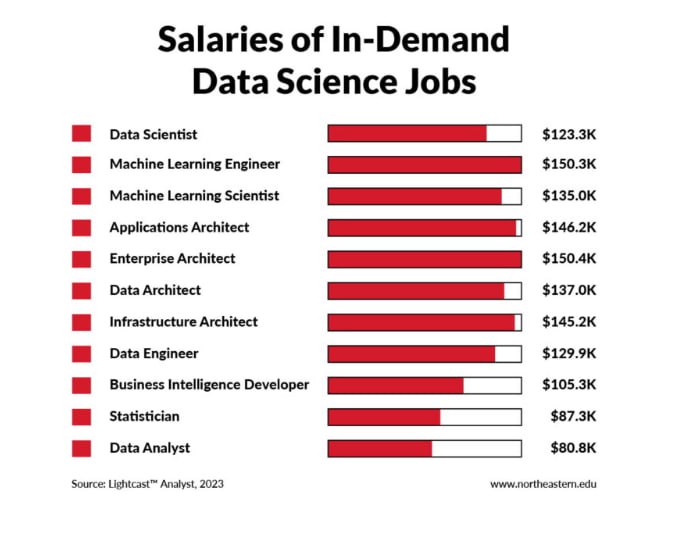Data science/ML/AI
ML
DL
AI
@programming_books_bds
@datascience_bds
@github_repositories_bds
@coding_interview_preparation
@data_visualization_bds
@tech_news_bds
@python_bds
@bigdataspecialist
DMCA disclosure: @disclosure_bds
Contact: @mldatascientist
Community chat: https://t.me/hamster_kombat_chat_2
Website: https://hamster.network
Twitter: x.com/hamster_kombat
YouTube: https://www.youtube.com/@HamsterKombat_Official
Bot: https://t.me/hamster_kombat_bot
Last updated 9 months, 2 weeks ago
Your easy, fun crypto trading app for buying and trading any crypto on the market.
📱 App: @Blum
🤖 Trading Bot: @BlumCryptoTradingBot
🆘 Help: @BlumSupport
💬 Chat: @BlumCrypto_Chat
Last updated 1 year, 3 months ago
Turn your endless taps into a financial tool.
Join @tapswap_bot
Collaboration - @taping_Guru
Last updated 10 months ago
**SNOWFLAKES AND DATABRICKS
Snowflake and Databricks** are leading cloud data platforms, but how do you choose the right one for your needs?
🌐 𝐒𝐧𝐨𝐰𝐟𝐥𝐚𝐤𝐞
❄️ 𝐍𝐚𝐭𝐮𝐫𝐞: Snowflake operates as a cloud-native data warehouse-as-a-service, streamlining data storage and management without the need for complex infrastructure setup.
❄️ 𝐒𝐭𝐫𝐞𝐧𝐠𝐭𝐡𝐬: It provides robust ELT (Extract, Load, Transform) capabilities primarily through its COPY command, enabling efficient data loading.
❄️ Snowflake offers dedicated schema and file object definitions, enhancing data organization and accessibility.
❄️ 𝐅𝐥𝐞𝐱𝐢𝐛𝐢𝐥𝐢𝐭𝐲: One of its standout features is the ability to create multiple independent compute clusters that can operate on a single data copy. This flexibility allows for enhanced resource allocation based on varying workloads.
❄️ 𝐃𝐚𝐭𝐚 𝐄𝐧𝐠𝐢𝐧𝐞𝐞𝐫𝐢𝐧𝐠: While Snowflake primarily adopts an ELT approach, it seamlessly integrates with popular third-party ETL tools such as Fivetran, Talend, and supports DBT installation. This integration makes it a versatile choice for organizations looking to leverage existing tools.
🌐 𝐃𝐚𝐭𝐚𝐛𝐫𝐢𝐜𝐤𝐬
❄️ 𝐂𝐨𝐫𝐞: Databricks is fundamentally built around processing power, with native support for Apache Spark, making it an exceptional platform for ETL tasks. This integration allows users to perform complex data transformations efficiently.
❄️ 𝐒𝐭𝐨𝐫𝐚𝐠𝐞: It utilizes a 'data lakehouse' architecture, which combines the features of a data lake with the ability to run SQL queries. This model is gaining traction as organizations seek to leverage both structured and unstructured data in a unified framework.
🌐 𝐊𝐞𝐲 𝐓𝐚𝐤𝐞𝐚𝐰𝐚𝐲𝐬
❄️ 𝐃𝐢𝐬𝐭𝐢𝐧𝐜𝐭 𝐍𝐞𝐞𝐝𝐬: Both Snowflake and Databricks excel in their respective areas, addressing different data management requirements.
❄️ 𝐒𝐧𝐨𝐰𝐟𝐥𝐚𝐤𝐞’𝐬 𝐈𝐝𝐞𝐚𝐥 𝐔𝐬𝐞 𝐂𝐚𝐬𝐞: If you are equipped with established ETL tools like Fivetran, Talend, or Tibco, Snowflake could be the perfect choice. It efficiently manages the complexities of database infrastructure, including partitioning, scalability, and indexing.
❄️ 𝐃𝐚𝐭𝐚𝐛𝐫𝐢𝐜𝐤𝐬 𝐟𝐨𝐫 𝐂𝐨𝐦𝐩𝐥𝐞𝐱 𝐋𝐚𝐧𝐝𝐬𝐜𝐚𝐩𝐞𝐬: Conversely, if your organization deals with a complex data landscape characterized by unpredictable sources and schemas, Databricks—with its schema-on-read technique—may be more advantageous.
🌐 𝐂𝐨𝐧𝐜𝐥𝐮𝐬𝐢𝐨𝐧:
Ultimately, the decision between Snowflake and Databricks should align with your specific data needs and organizational goals. Both platforms have established their niches, and understanding their strengths will guide you in selecting the right tool for your data strategy.
CHOOSING THE RIGHT DATA ANALYTICS TOOLS
With so many data analytics tools available,
how do you pick the right one?
The truth is—there’s no one-size-fits-all answer.
The best tool depends on your needs, your data, and your goals.
Here’s how to decide:
🔹 For Data Exploration & Cleaning → SQL, Python (Pandas), Excel
🔹 For Dashboarding & Reporting → Tableau, Power BI, Looker
🔹 For Big Data Processing → Spark, Snowflake, Google BigQuery
🔹 For Statistical Analysis → R, Python (Statsmodels, SciPy)
🔹 For Machine Learning → Python (Scikit-learn, TensorFlow)
Ask yourself:
✅ What type of data am I working with?
✅ Do I need interactive dashboards?
✅ Is coding necessary, or do I need a no-code tool?
✅ What does my team/stakeholder prefer?
The best tool is the one that helps you solve problems efficiently.
𝐓𝐨𝐩 𝐌𝐢𝐜𝐫𝐨𝐬𝐞𝐫𝐯𝐢𝐜𝐞𝐬 𝐃𝐞𝐬𝐢𝐠𝐧 𝐏𝐚𝐭𝐭𝐞𝐫𝐧𝐬
➡️ 1. API Gateway Pattern: Centralizes external access to your microservices, simplifying communication and providing a single entry point for client requests.
➡️ 2. Backends for Frontends Pattern (BFF): Creates dedicated backend services for each frontend, optimizing performance and user experience tailored to each platform.
➡️ 3. Service Discovery Pattern: Enables microservices to dynamically discover and communicate with each other, simplifying service orchestration and enhancing system scalability.
➡️ 4. Circuit Breaker Pattern: Implements a fault-tolerant mechanism for microservices, preventing cascading failures by automatically detecting and isolating faulty services.
➡️ 5. Retry Pattern: Enhances microservices' resilience by automatically retrying failed operations, increasing the chances of successful execution and minimizing transient issues.

SQL Mindmap
?????? ????????? vs ????? ?????????
Selecting the right database depends on your data needs—vector databases excel in similarity searches and embeddings, while graph databases are best for managing complex relationships between entities.
?????? ?????????:
- Data Encoding: Vector databases encode data into vectors, which are numerical representations of the data.
- Partitioning and Indexing: Data is partitioned into chunks and encoded into vectors, which are then indexed for efficient retrieval.
- Ideal Use Cases: Perfect for tasks involving embedding representations, such as image recognition, natural language processing, and recommendation systems.
- Nearest Neighbor Searches: They excel in performing nearest neighbor searches, finding the most similar data points to a given query efficiently.
- Efficiency: The indexing of vectors enables fast and accurate information retrieval, making these databases suitable for high-dimensional data.
????? ?????????:
- Relational Information Management: Graph databases are designed to handle and query relational information between entities.
- Node and Edge Representation: Entities are represented as nodes, and relationships between them as edges, allowing for intricate data modeling.
- Complex Relationships: They excel in scenarios where understanding and navigating complex relationships between data points is crucial.
- Knowledge Extraction: By indexing the resulting knowledge base, they can efficiently extract sub-knowledge bases, helping users focus on specific entities or relationships.
- Use Cases: Ideal for applications like social networks, fraud detection, and knowledge graphs where relationships and connections are the primary focus.
??????????:
Choosing between a vector and a graph database depends on the nature of your data and the type of queries you need to perform. Vector databases are the go-to choice for tasks requiring similarity searches and embedding representations, while graph databases are indispensable for managing and querying complex relationships.
Source: Ashish Joshi


streamlit
Streamlit — A faster way to build and share data apps.
Creator: Streamlit
Stars ⭐️: 35.4k
Forked By: 3.1k
https://github.com/streamlit/streamlit
#datascience
➖➖➖➖➖➖➖➖➖➖➖➖➖➖
Join @datascience_bds for more cool repositories.
*This channel belongs to @bigdataspecialist group

Salaries of In-demand data science jobs
12 Fundamental Math Theories Needed to Understand AI
1. Curse of Dimensionality
This phenomenon occurs when analyzing data in high-dimensional spaces. As dimensions increase, the volume of the space grows exponentially, making it challenging for algorithms to identify meaningful patterns due to the sparse nature of the data.
2. Law of Large Numbers
A cornerstone of statistics, this theorem states that as a sample size grows, its mean will converge to the expected value. This principle assures that larger datasets yield more reliable estimates, making it vital for statistical learning methods.
3. Central Limit Theorem
This theorem posits that the distribution of sample means will approach a normal distribution as the sample size increases, regardless of the original distribution. Understanding this concept is crucial for making inferences in machine learning.
4. Bayes’ Theorem
A fundamental concept in probability theory, Bayes’ Theorem explains how to update the probability of your belief based on new evidence. It is the backbone of Bayesian inference methods used in AI.
5. Overfitting and Underfitting
Overfitting occurs when a model learns the noise in training data, while underfitting happens when a model is too simplistic to capture the underlying patterns. Striking the right balance is essential for effective modeling and performance.
6. Gradient Descent
This optimization algorithm is used to minimize the loss function in machine learning models. A solid understanding of gradient descent is key to fine-tuning neural networks and AI models.
7. Information Theory
Concepts like entropy and mutual information are vital for understanding data compression and feature selection in machine learning, helping to improve model efficiency.
8. Markov Decision Processes (MDP)
MDPs are used in reinforcement learning to model decision-making scenarios where outcomes are partly random and partly under the control of a decision-maker. This framework is crucial for developing effective AI agents.
9. Game Theory
Old school AI is based off game theory. This theory provides insights into multi-agent systems and strategic interactions among agents, particularly relevant in reinforcement learning and competitive environments.
10. Statistical Learning Theory
This theory is the foundation of regression, regularization and classification. It addresses the relationship between data and learning algorithms, focusing on the theoretical aspects that govern how models learn from data and make predictions.
11. Hebbian Theory
This theory is the basis of neural networks, “Neurons that fire together, wire together”. Its a biology theory on how learning is done on a cellular level, and as you would have it — Neural Networks are based off this theory.
12. Convolution (Kernel)
Not really a theory and you don’t need to fully understand it, but this is the mathematical process on how masks work in image processing. Convolution matrix is used to combine two matrixes and describes the overlap.
Special thanks to Jiji Veronica Kim for this list.
➖➖➖➖➖➖➖➖➖➖➖➖➖➖
Join @datascience_bds for more cool repositories.
This channel belongs to @bigdataspecialist group*
Community chat: https://t.me/hamster_kombat_chat_2
Website: https://hamster.network
Twitter: x.com/hamster_kombat
YouTube: https://www.youtube.com/@HamsterKombat_Official
Bot: https://t.me/hamster_kombat_bot
Last updated 9 months, 2 weeks ago
Your easy, fun crypto trading app for buying and trading any crypto on the market.
📱 App: @Blum
🤖 Trading Bot: @BlumCryptoTradingBot
🆘 Help: @BlumSupport
💬 Chat: @BlumCrypto_Chat
Last updated 1 year, 3 months ago
Turn your endless taps into a financial tool.
Join @tapswap_bot
Collaboration - @taping_Guru
Last updated 10 months ago